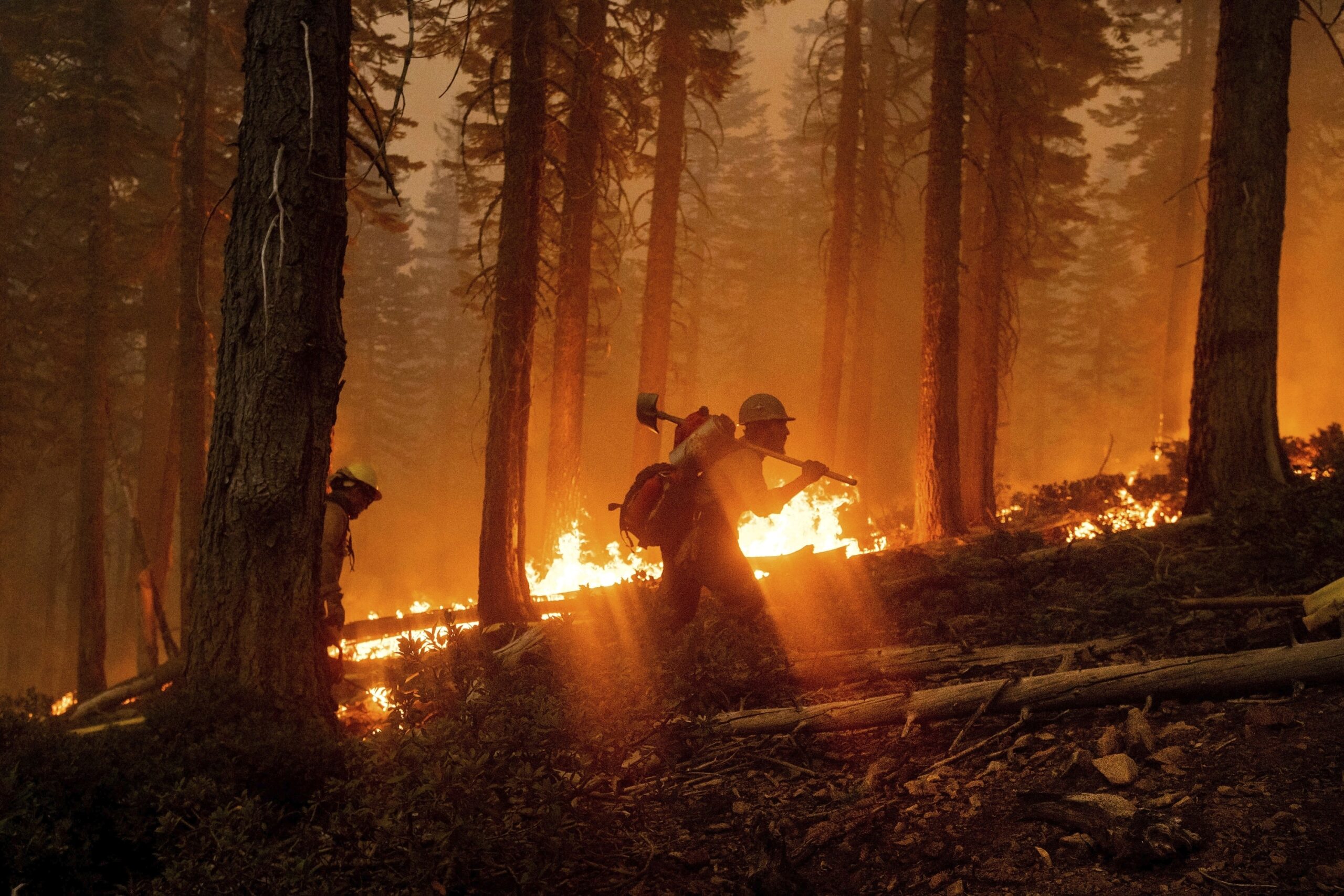As of Wednesday, there were 78 large wildfires actively burning in 13 states, according to the National Interagency Fire Center. Natural Resources Canada shows more than 600 active fires as of July 14.
West Virginians and others living in the mid-Atlantic region who happen to go outside might have noticed — either by the smoky smell or the greyish haze blanketing the sky.
That’s because there is an upper flow pattern bringing smoke and its pollutants to the area, according to meteorologist Pat Herald of the National Weather Service in Pittsburgh.
Herald said he expects smoke to continue to cover the area for the rest of the week. An incoming high pressure system that started building on Wednesday will also trap low level pollutants.
At one point Wednesday, the air quality index (AQI) reached 101 or “unhealthy for sensitive groups,” in Morgantown.
“It’s not good,” said Michael McCawley, clinical associate professor with the department of occupational health and environmental health sciences at West Virginia University. “The AQI is kind of a rough figure about what the air is like and what the possibilities are for becoming ill due to breathing whatever is out there.”
The particles caused by wildfires are called combustion products, which tend to be small in size and more toxic, McCawley said. Their size also makes them harder to measure and the 101 AQI could be an underestimate.
Dr. Sunil Sharma, with WVU Medicine, said, “These very fine pollution particles can not only reach deep into the lungs they can get into the blood stream and also impact your heart. There are both short-term and long-term health consequences of exposure to air pollution. It may take one to three days from the time of exposure to onset of symptoms.”
People with chronic conditions, such as asthma, COPD, or heart conditions, should be especially concerned.
Sharma recommended staying indoors, keeping an eye on daily AQI levels, avoiding outdoors exercise and wearing an N-95 air filter outside.
Smoke from western fires reaching West Virginia is nothing new, Nicholas Zegre, associate professor of Forest Hydrology and director of WVU’s Mountain Hydrology Lab, said.
“Even going back long-term in history I would say this is a very consistent phenomenon that happens,” he said. However, typically the smoke stays higher in the air and isn’t as noticeable or as dangerous to public health.
Zegre said he expects more smoke and haze to cover West Virginia this year as the fire season started about a month and a half early — driven by the warming atmosphere. Acreage lost to wildfires so far in 2021 is about double what it was this time last year.
Does this all tie into climate change?
“Absolutely, no hesitation,” Zegre said. “My hope is this is an opportunity for citizens of West Virginia to realize what happens in other places does affect us,” he said. “Smoke (in the western states) or hurricanes in the Atlantic, because of the global economy and how everything is connected, what happens elsewhere does matter to us. Even though climate change may not seem as real in West Virginia it is very real and it is happening.”
TWEET @DominionPostWV




